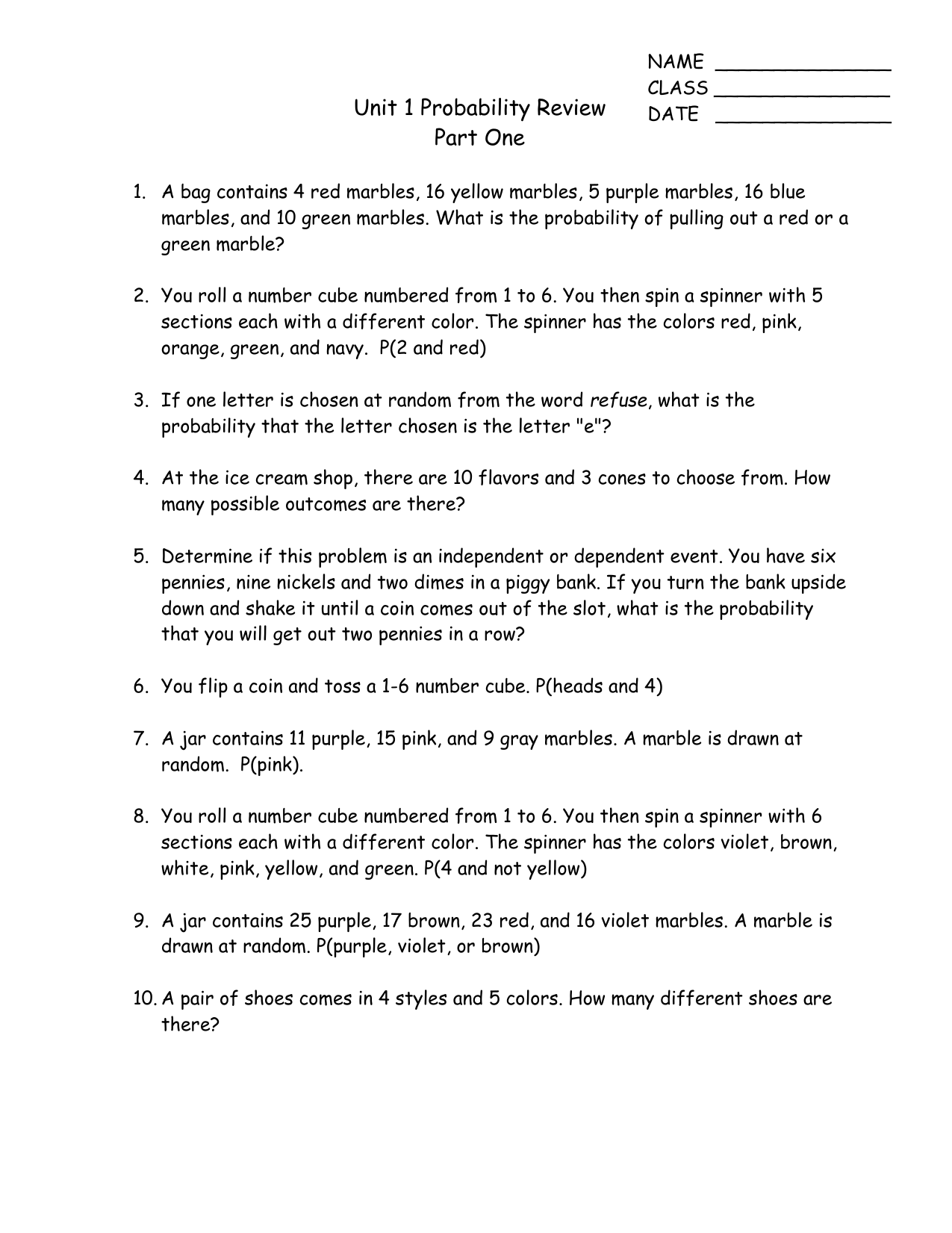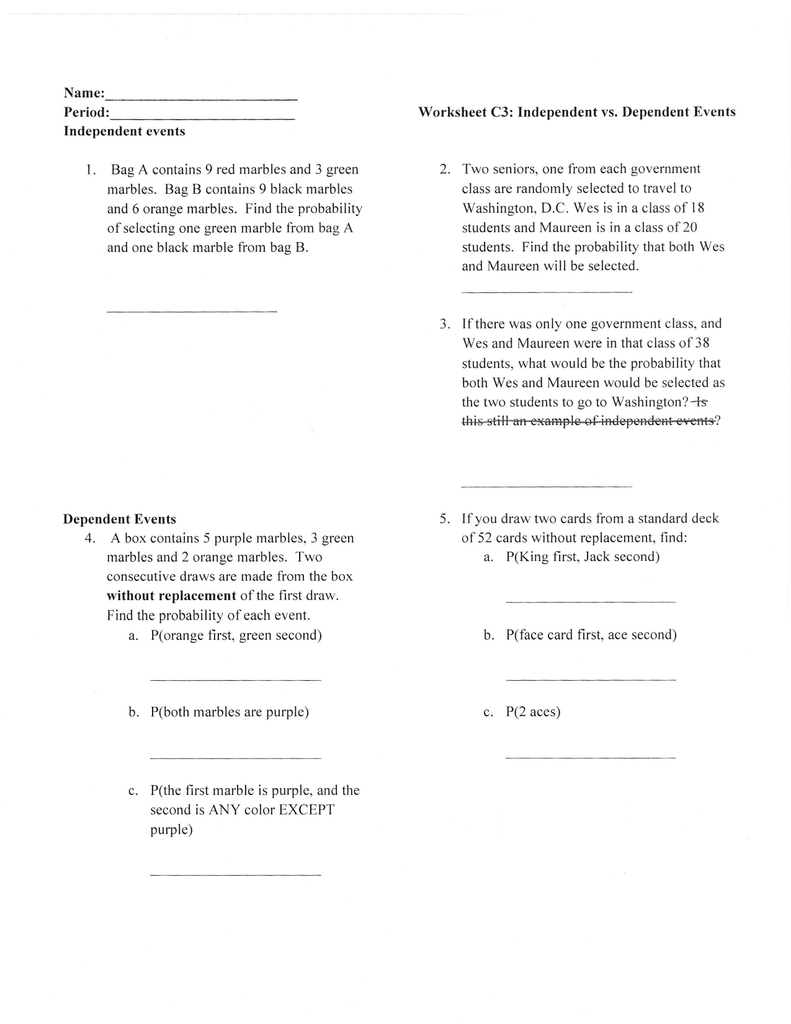Draws are made without replacement.
A bag contains 5 red marbles 3 green marbles 2 purple marbles 2 orange marbles and 1 blue marble.
A box contains 5 purple marbles 3 green marbles and 2 orange marbles.
A marble is chosen at random from the jar and replaced.
First since we are dealing with the color orange and the rest according to the question we can say that we have only two sets of marbles.
A draw the tree diagram for the experiment.
Two marbles are drawn one at a time from the bag.
A bag contains 8 red marbles 5 blue marbles 8 yellow marbles and 6 green marbles.
A bag contains 3 red marbles 5 blue marbles and 2 green marbles.
Two consecutive draws are made from the bag without replacement of the first draw.
This is simple so first we set this problem up 2 red 3 blue 7 green 12 total marbles the formula for calculator probability is of favorable outcomes of possible outcomes the number of favorable outcomes we have is 3 because we are try.
What is the probability of choosing a red marble if a single choice is made from the bag.
The first set is the orange and that contains just 3 orange marbles.
A bag contains 3 red marbles 2 blue marbles and 5 green marbles.
Algebra linear inequalities and absolute value theoretical and experimental probability.
3 yellow marbles and 2 black marbles.
A bag contains 5 red marbles and 4 pink marbles.
After drawing out the first marble it is replaced in the bag before drawing the second marble.
A jar contains 4 black marbles and 3 red marbles.
The second set contains 5 blue and 4 red marbles making a total of 9.
Draws are made without replacement.
Find the probability that both are blue under each condition.
Is it 8 27.
Two marbles are drawn without replacement from a jar containing 4 black and 6 white marbles.
In this bag with x 2 5 marbles total x 1 are red.
Report answers to 3 decimal places.
Two marbles are drawn without replacement.
A bag contains 5 blue marbles 4 red marbles and 3 orange marbles.
A marble is randomly drawn and then replaced.
Also x 3 marbles have a scratch on them.
What is the probability of randomly selecting a blue marble then without replacing it randomly selecting a green marble.
A bag contains 5 green marbles 8 red marbles 11 orange marbles 7 brown marbles and 12 blue marbles.
Bag a contains 9 red marbles and 3 green marbles.
The probability of drawing a red marble from the original bag is equal to that.
P 1st orange then green.
B find probabilities for p bb p br p rb p ww p at least one red p exactly one red 3.

















